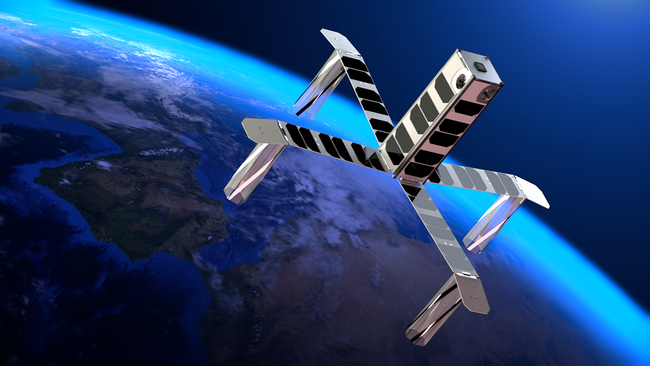LSAT is a high-gain, dynamic phased array antenna for UHF SATCOM. It features four hexagonal antennae that fold up into the solar panels as shown in the video demo here:
https://youtu.be/UfuUwajlvcUThe array can track co-operative targets, enabling high speed communication with small, disadvantaged terminals such as handheld radios, unmanned ground sensors and emergency beacons. It can also operate in direction-finding mode, using beamforming and Doppler processing techniques to determine the precise origin of UHF signals.
Each antenna is an open-ended quadrifilar helix, made of copper traces bonded to a single sheet of dielectric film. The sheet is is stiffened with six fibreglass panels and formed into a hexagonal tube. The tubes fold flat into the space at the sides of the satellite and deploy using standard spring hinges.
The antennae feature 20Mhz bandwidth at UHF military uplink frequencies and may be operated at a higher downlink frequency with the use of a duplexer. Our simulation predicts almost 7dB of gain for the array, a fivefold increase in gathering power over a standard UHF tape-spring antenna.
By adjusting the phase of the signal at each antenna, the direction of the main beam may be rapidly changed without physically moving the satellite. This allows us to keep the beam locked on to a mobile or static target as the satellite passes overhead, providing horizon-to-horizon communication to even the smallest ground terminals.
The LSAT system is incredibly versatile. Using standard flex-rigid PCB manufacturing processes it is possible to print and test a new conductive element without modifying either the support structure or the method of deployment. L-band, S-band or higher frequencies are all possible. With only minor modifications it can be mounted on both 3U and 6U cubesats, including the 1.5U payload structure supported by the Prometheus cubesat bus.
